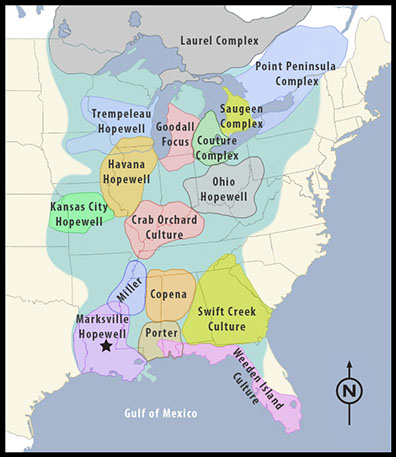Trade and Travel
Rivers were ancient people’s best means of sending and getting news. Canoes carried people, goods, food, and information. In fact, people probably built most of the big Hopewell sites along rivers in part because it made it easier for them to trade and stay in touch. It is easy to imagine news about events at these sites spreading along rivers, lakes, and bayous.
Long-distance trade was a big part of life at many Hopewell sites. Archaeologists might expect to find non-local stone at Marksville, given that it is so close to major rivers. Instead, it looks as if the people who built the site did not place a high value on trade goods. They preferred to use and make things out of local resources. In this sense, they valued what was familiar to them.
Hopewell people did not share a single culture. Rather, they had a common set of beliefs that was carried to other people through trade and travel. Each group chose what Hopewell beliefs to adopt and how they would be expressed in their culture. The area of trade and shared beliefs is called the Hopewell Interaction Sphere. The sphere stretched in the U.S. from Minnesota to Florida and from New York to Kansas City and Louisiana. At Marksville, people adopted Hopewell earthworks and burial customs but did not choose to trade many materials. People made most stone tools from rock that was found locally. Stone from far away (left) was used only rarely at Marksville. These pieces are from Illinois (dark) and Missouri (light).
Next
Back

Adapted from Roe 2008
